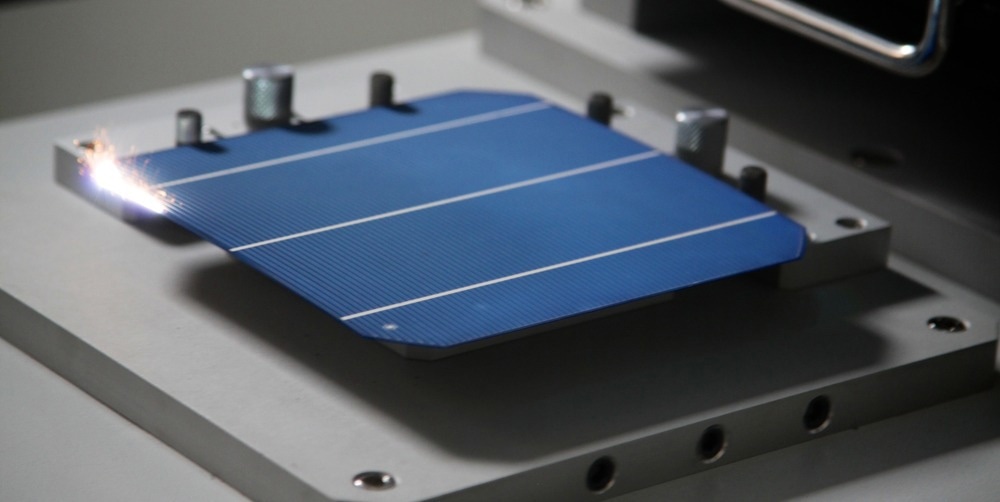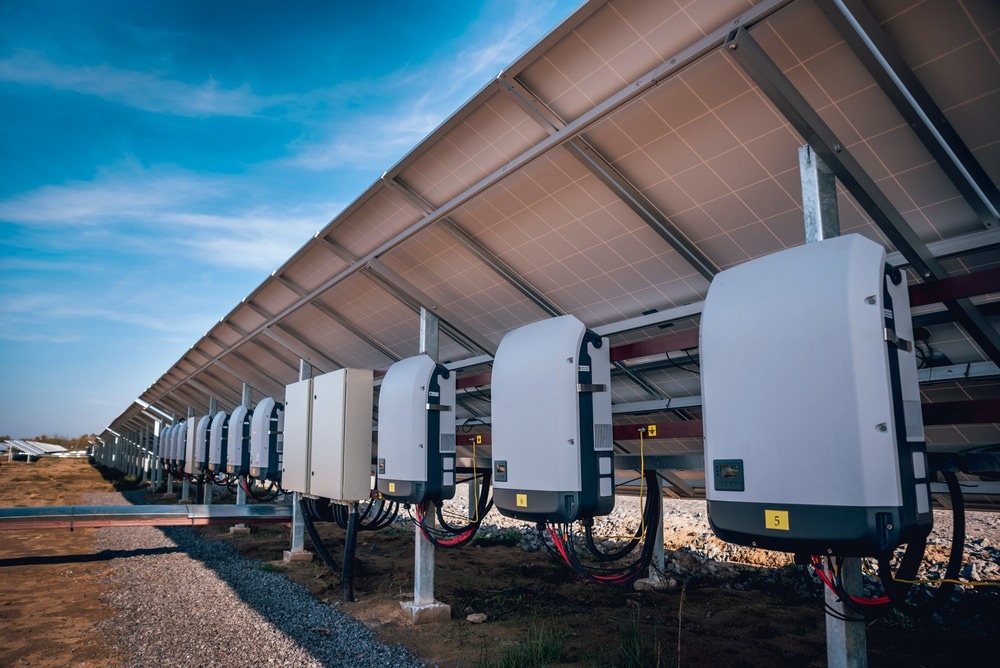The solar technology market is rapidly transforming, reshaping the renewable energy landscape. This article delves into the latest trends and breakthroughs within the solar industry, revealing its vast potential.

Image Credit: ME Image/Shutterstock.com
Navigating through the ongoing advancements and challenges encountered in the sector, this article provides insights into the prospects of sustainable energy.
What are the Financial Impacts of Underperforming Solar Assets?
The financial impacts of underperforming solar assets, as detailed in the Global Solar Report 2023, are significant and multi-dimensional. The report reveals an annual revenue loss of $82 million in 2022 for the 24.5GW of assets analyzed, which suggests a staggering $2.5 billion loss industry-wide.
This underperformance, which has nearly doubled since 2019, is primarily attributed to equipment anomalies. Larger sites, particularly those exceeding 200MW, have experienced a more than threefold increase in underperformance since 2019. These trends not only signify immediate revenue impacts but also raise concerns about solar projects' long-term profitability and bankability.
The industry's growing commitment to addressing these financial challenges is evident in the increasing preference for detailed, IEC-compliant inspections. However, the expanding scale of solar installations and the complexity of equipment manufacturing, particularly in the U.S., are escalating the urgency to address these issues.
With anomaly-driven power loss potentially reaching nearly 6 % by 2025, the implications for the financial viability of future projects are profound. This highlights the need for a more sophisticated approach to managing solar asset health and performance.
How Is Legislation Influencing Solar Industry Growth?
The Global Solar Report 2023 highlights the critical role of legislation in the solar industry, with a particular emphasis on the significant influence of the Inflation Reduction Act in the U.S., which assigned $370 billion for renewable energy. This legislation has created unprecedented demand in the solar industry.
A key component of the Act is the expansion of the Federal Tax Credit for Solar Photovoltaics, known as the Investment Tax Credit (ITC). Now extended through 2032, this credit offers a 30 % tax credit on the installation cost of a solar photovoltaic system.
The credit will decrease to 26 % and 22 % in 2033 and 2034, respectively. Such extensions and increases in the ITC make solar installations more financially accessible to a broader range of Americans, encouraging solar technology adoption.
Similarly, in Europe, policy pressures and initiatives like the REPowerEU plan, aiming for 320GW of new solar by 2025, demonstrate the direct impact of legislation on solar sector expansion. The report underscores the importance of legislative support in realizing the potential of solar energy, both in terms of power production and profitability.
What Technological Innovations are Shaping Solar Efficiency?
Advancements in solar efficiency are driven by technological innovations in various solar photovoltaic (P.V.) system components. Over the past decade, the solar industry has witnessed a significant 90 % reduction in solar module prices, alongside substantial technological progress (Global Market Outlook for Solar Power, 2022).
Although solar has already become the lowest-cost power generation technology in many applications and locations, there is still much room for further developments in order to continue reducing costs to make the technology even more competitive and open to new frontiers.
(Global Market Outlook for Solar Power, 2022)
Key Technological Innovations
Wafers
Monocrystalline silicon has become the dominant wafer material, supporting higher cell efficiencies due to fewer defects. Its market share has surged from approximately 40 % in 2017 to nearly 90 % by the end of 2021.

Image Credit: obm/Shutterstock.com
N-type monocrystalline wafers offer higher efficiency and are increasingly used in advanced crystalline cell technologies such as interdigitated back contact cells (IBC), heterojunction (HJT), and passivated contacts (TOPCon).
Cells
The focus on increasing efficiency and reducing costs at the cell level has driven the development of advanced technologies such as HJT, TOPCon, and IBC. PERC (Passivated Emitter Rear Contact) technology remains state-of-the-art, with commercial efficiency of approximately 23.2 %. However, technologies like TOPCon and HJT are emerging as potential successors, offering higher efficiency potentials.
Modules
A prevailing trend is the adoption of larger wafer formats to boost module power without the need to switch to new cell technology. This trend has spurred the development of large wafer sizes like G12 (the largest commercially available size). Advanced module technologies like half cells, multi-busbars (MBB), and shingling are being used to improve module performance.
Integrated applications
Innovative applications for P.V. technology include Building Integrated P.V. (BIPV), Agricultural P.V. (Agri P.V.), Floating Solar (FPV), and Vehicle Integrated P.V. (VIPV).
These multifunctional solar solutions offer power generation and other benefits, adapting to specific weight, size, shape, and color requirements. While still niche, these non-traditional solar applications garner significant interest from the industry and policymakers.
Tandem cells
The industry is exploring multi-junction technology as single-junction crystalline cell efficiencies approach their limits. The most promising candidate is a c-Si/Perovskite tandem cell structure, with the potential to exceed efficiencies beyond 35 %.
Bifacial modules
Bifacial module design is being increasingly adopted in utility-scale P.V. plants. It generates power from both sides of a P.V. device. This design, prevalent in advanced cell architectures like IBC (Zebra), requires the replacement of the opaque backsheet with a transparent rear cover (typically glass). Bifacial technology enhances power yield and reduces LCOE, with gains varying from 5 % to 30 %.
Inverters
Inverters, now the core of solar P.V. systems, have evolved with the digitalization of the solar sector. Beyond converting D.C. to A.C., they manage storage systems, optimize power plant operations, and integrate with intelligent energy systems.

Image Credit: Roman Zaiets/Shutterstock.com
Adapting to the demands of larger utility plants and the rooftop market, their designs accommodate larger cell modules, with a notable increase in hybrid inverters for residential solar and storage systems.
Mounting systems
Trackers, essential in large utility-scale solar plants, particularly in sun-rich southern regions, are now increasingly used in less sunny areas. Redesigned for bifacial modules, they enable unhindered back-side power generation.
The latest upgrades focus on enhanced sturdiness to withstand strong winds, which is essential for supporting large module formats over 600 W, optimizing daily solar electricity supply, and improving LCOEs.
What are the Emerging Trends in Global Solar Installations?
The global solar installation sector is undergoing significant and rapid evolution, as highlighted in the Global Market Outlook for Solar Power 2022-2026 report, with the world achieving the 1 T.W. (terawatt) milestone in solar capacity early in 2022.
This is a remarkable increase from just 2 G.W. (gigawatts) two decades prior. The sector's growth trajectory is robust, with projections to add over 200 GW in 2022 alone, matching the entire global solar capacity recorded in 2015.
Key drivers of these trends include technological advancements, cost reductions, and supportive government policies. Notably, the cost of utility-scale solar has consistently declined, making it more affordable than many traditional power sources and catapulting solar energy to a leading position among renewable energy options.
On a regional scale, diverse patterns emerge. The Asia-Pacific region, spearheaded by China and India, continues to dominate the solar market despite a 6 % drop in its global share in 2021.
The Americas, featuring countries like the U.S. and Brazil, are witnessing significant increases in solar installations. Europe is also expanding its solar presence, driven by nations such as Germany and Spain and influenced by policy shifts and market dynamics.
Based on current trends and data, the future of solar installations appears positive. The report forecasts that the global installed solar capacity could reach 2 T.W. by 2025. This highlights the escalating contribution of solar energy in meeting global electricity demands and playing a crucial role in the fight against climate change.
What Challenges and Opportunities Exist in Solar Module Technology?
The solar module industry faces the significant challenge of variability in anomaly rates among different module technologies. For instance, polycrystalline modules tend more toward anomalies than their thin-film and monocrystalline counterparts.
According to the 2023 Global Solar Report, monocrystalline modules had fewer anomalies than thin-film and polycrystalline modules by 41 % and 65 %, respectively. This variation demands a more tailored approach to module selection and maintenance processes.
However, these challenges pave the way for substantial opportunities, particularly in the evolution of module technology and inspection methodologies. The industry is increasingly adopting comprehensive inspections that comply with IEC standards, with a 32 % surge in the demand for these inspections in 2022 alone.
These inspections provide more detailed data and precise temperature measurements, facilitating improved decision-making in terms of module upkeep and warranty claims.
Innovations focus on boosting module efficiency and longevity to address these challenges. The development of digital twins and advanced geospatial intelligence tools is revolutionizing the identification and resolution of equipment anomalies.
Future projections for module technology development indicate a sustained focus on enhancing efficiency and minimizing anomaly occurrences. The industry anticipates progress in technologies less susceptible to defects and more resilient to environmental stressors.
There is also an expected increase in the application of data analytics and artificial intelligence to foresee and mitigate potential issues. This technological integration aims to enhance performance and extend the lifespan of solar modules.
Envisioning the Solar Future: Prospects and Predictions for the Global Market
Technological advancements, cost reductions, and supportive government policies primarily drive the dynamic expansion of the solar market. Utility-scale solar is now a cost-effective alternative to traditional power sources, elevating its status as a front-runner in renewable energy.
The industry anticipates further transformative changes, mainly through continued technological innovations in solar cell and module technologies. Breakthroughs in monocrystalline silicon, PERC, TOPCon, and HJT cells, along with larger wafer sizes and more efficient inverters, are expected to enhance efficiency and reduce costs.
The convergence of solar technology with emerging sectors like battery storage and green hydrogen production also creates new growth and innovation opportunities, unlocking significant potential within the industry.
The combination of ongoing innovation, decreasing costs, and increasing government support is expected to maintain the growth trajectory of solar energy. Projections suggest a potential doubling of global installed solar capacity to 2 T.W. by 2025, underscoring solar power's growing impact in the global electricity market and its crucial role in combating climate change.
The solar sector is poised to substantially transform the global energy landscape at this pivotal moment. The steady pace of technological advancements, backed by favorable policies and market trends, positions solar energy as a critical player in transitioning to a more sustainable, renewable energy future.
References and Further Reading
Hemetsberger, W., Schemla, M., Chianetta, G., Sauaia, R. (2023). Global Market Outlook For Solar Power 2022-2026. [Online] SolarPower Europe. Available at: https://www.solarpowereurope.org/insights/market-outlooks/global-market-outlook-for-solar-power-2022 (Accessed on 14 December 2023).
Raptor Maps. (2023). 2023 Global Solar Report. [Online] Raptor Maps. Available at: https://raptormaps.com/resources/2023-global-solar-report (Accessed on 14 December 2023).
The Office of Energy Efficiency and Renewable Energy. (2022). Solar Investment Tax Credit: What Changed? [Online] The Office of Energy Efficiency and Renewable Energy. Available at: https://www.energy.gov/eere/solar/articles/solar-investment-tax-credit-what-changed (Accessed on 14 December 2023).
Disclaimer: The views expressed here are those of the author expressed in their private capacity and do not necessarily represent the views of AZoM.com Limited T/A AZoNetwork the owner and operator of this website. This disclaimer forms part of the Terms and conditions of use of this website.